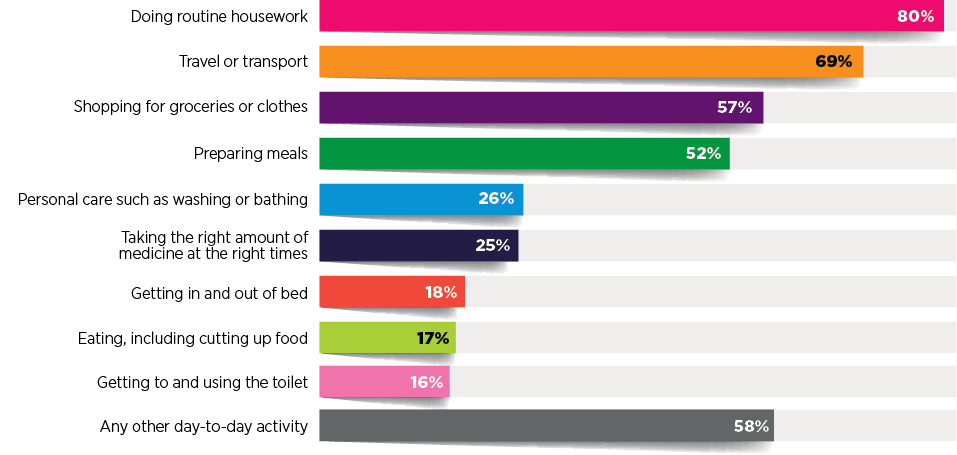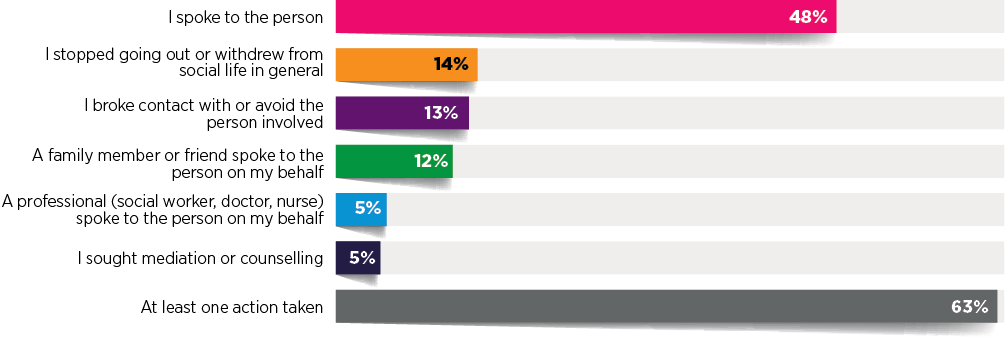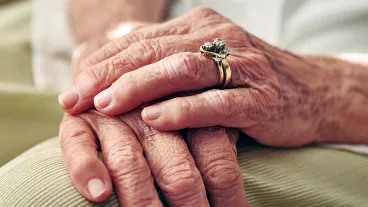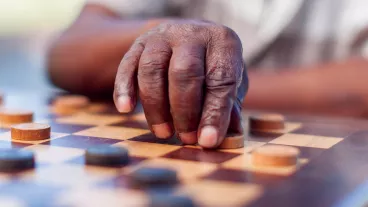Elder abuse in Australia: Neglect
Findings from the National Elder Abuse Prevalence Study
Download Research snapshot
This snapshot discusses elder abuse and presents material that some people may find distressing. If you or someone you know needs assistance, please call 1800 ELDERHelp (1800 353 374). A list of elder abuse support services is available at the end of this snapshot. If you are in immediate danger call Police on 000.
Overview
As part of the National Plan to Respond to the Abuse of Older Australians (Council of Attorneys-General, 2019), the Attorney-General's Department commissioned the National Elder Abuse Prevalence Study (NEAPS) to investigate elder abuse. This snapshot provides the key findings of the Survey of Older People (2020), a nationally representative survey of 7,000 people aged 65 and over living in the community (i.e. they did not live in residential aged care settings).
How common is neglect?
The Survey of Older People indicated that 3% of community-dwelling people aged 65 and older in Australia reported experiencing neglect in the 12 months prior to the survey. This means that they had a need for support and there was someone who was meant to provide that support but didn't. The most common form of neglect involved a failure to do routine housework (80% of those who experienced neglect), assist with transport (69%), help with shopping for groceries or clothes (57%) and prepare meals (52%). More than one-half of older participants who reported an experience of neglect nominated a failure to assist with 'any other day-to-day activity'1 (58%).
Figure 1: Participants who were classified as experiencing neglect, proportion reporting each neglect item

More women than men reported experiences of neglect (4% cf. 2%). Being separated or divorced, owning a home with debt and living in rented accommodation (including public housing) were factors associated with a greater likelihood of neglect. An experience of neglect was associated with poorer physical health, poorer psychological health and a lower sense of social connection.
Who is responsible for neglect?
Participants who reported an experience of neglect provided information regarding their relationship with those who failed to provide the support they needed and further information on the 'main perpetrators' of neglect. The 'main perpetrator' refers to the only person who neglected the older person's needs or the person who affected the older person the most when more than one person was responsible for the neglect.

- Sons were slightly more likely than daughters to be among the 'main perpetrators' of neglect (14% vs 9%).
- Four in 10 'main perpetrators' of neglect were living with the participants.
- One-quarter of 'main perpetrators' of neglect had physical health problems and one-tenth (11%) had mental health problems.
Figure 2 depicts the relationship between the participant and the person responsible for the neglect, including the 'main perpetrator' and other perpetrators. Overall, partners/spouses and children were the two largest perpetrator groups (25% and 24% respectively). Professional carers and service providers were other large perpetrator groups (13%-14%).
Figure 2: Relationship of perpetrators to the participants who experienced neglect (as % of all perpetrators of neglect)

Note: An older person may report more than one person who neglected their need(s).
Do older people who experience neglect seek help?
Most older people who experienced neglect did not seek help or advice. Only one in five older people who reported experiencing neglect indicated that they sought help or advice about their experience. The common sources of help and advice were:

Regardless of whether they reported seeking help or advice from a third party, the majority of older persons (63%) said that they took action, or had action taken on their behalf, to stop the neglect from happening again. The most common action taken by older people who reported experiencing neglect was speaking to the perpetrator (48%).
Figure 3: Action taken by older persons who experienced neglect in the past 12 months

Note: Multiple responses and sum may exceed 100%.
Support services/Helplines
- If you have any concerns about potential or actual elder abuse, please contact 1800 ELDERHelp (1800 353 374) to be redirected to the existing phone line service in your state or territory (free call).
- If you or someone you know have experienced violence or sexual assault and require immediate or ongoing assistance, contact 1800 RESPECT (1800 737 732) to talk to a counsellor from the National Sexual Assault and Domestic Violence hotline.
- For confidential support and information, contact Safe Steps' 24/7 family violence response line on 1800 015 188 or the Men's Referral Service on 1300 766 491.
- For a confidential discussion with an experienced counsellor, call Lifeline on 13 11 14.
1 Examples may include moving around the house, house activities such as gardening.
Elder abuse in Australia: Prevalence
Elder abuse in Australia: Physical abuse
Elder abuse in Australia: Psychological abuse
Elder abuse in Australia: Financial abuse
Elder abuse in Australia: Sexual abuse
Elder abuse in Australia: Culturally and linguistically diverse Australians
Elder abuse in Australia: Wills, powers of attorney and family agreements
Featured image: GettyImages/Anna Frank
Australian Institute of Family Studies. (2022). Elder abuse in Australia: Neglect. (Findings from the National Elder Abuse Prevalence Study). Melbourne: Australian Institute of Family Studies.
Download Research snapshot
Related publications

Elder abuse in Australia: Sexual abuse
This snapshot provides key findings from the Survey of Older People (2020), a nationally representative survey of 7,000…
Read more
Elder abuse in Australia: Culturally and linguistically…
This snapshot provides key findings from the Survey of Older People (2020), a nationally representative survey of 7,000…
Read more
Elder abuse in Australia: Wills, powers of attorney and…
This snapshot provides key findings from the Survey of Older People (2020), a nationally representative survey of 7,000…
Read more